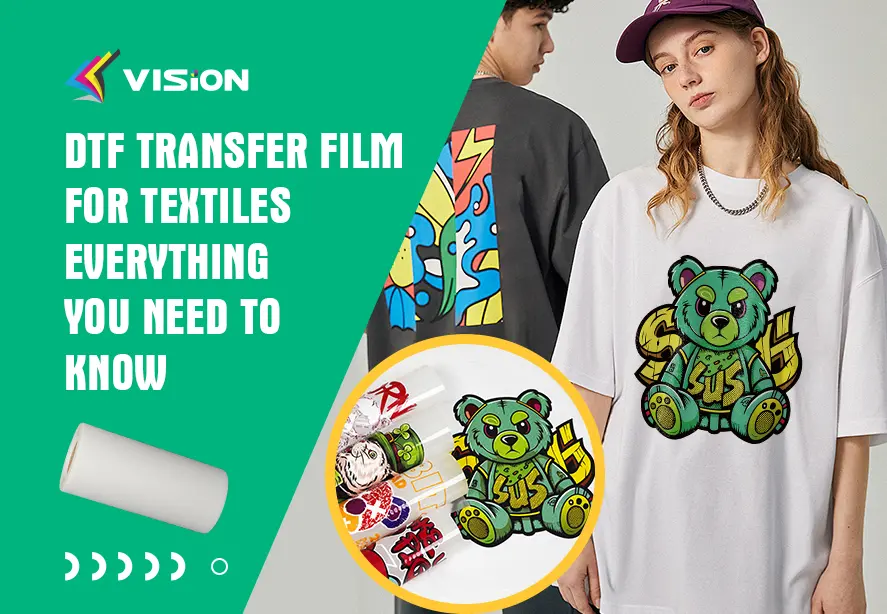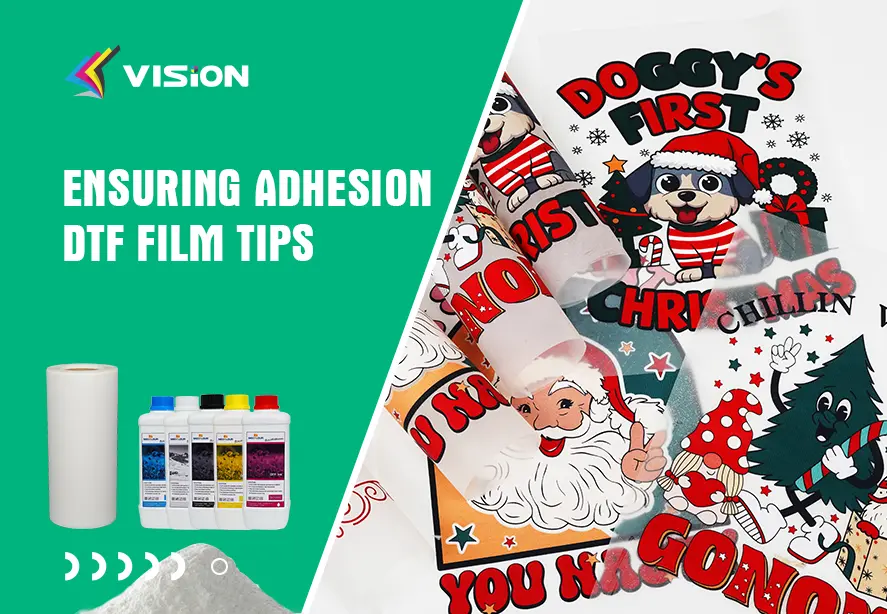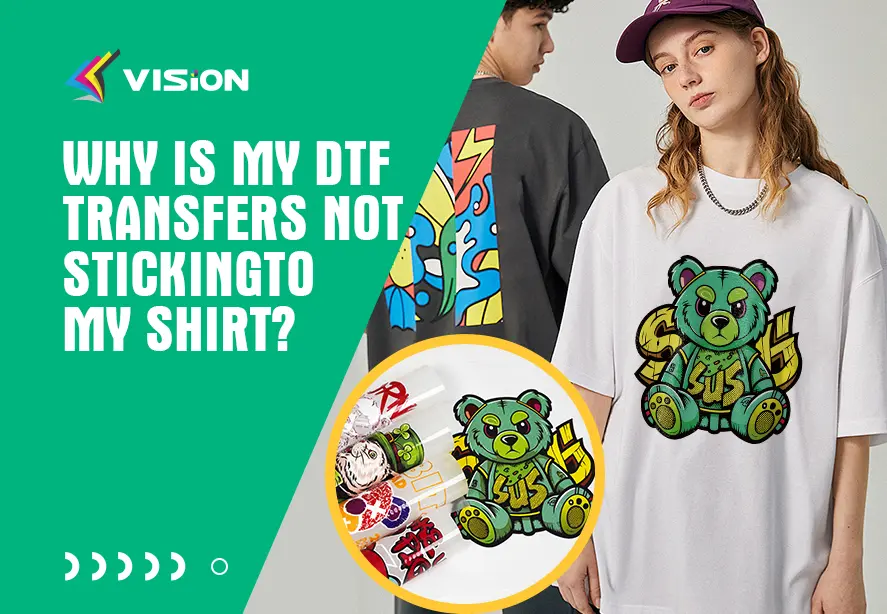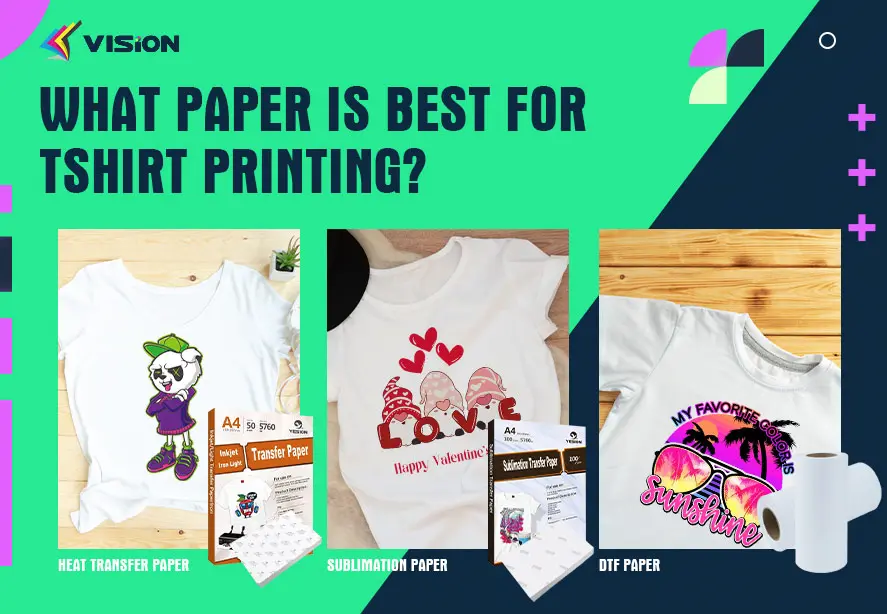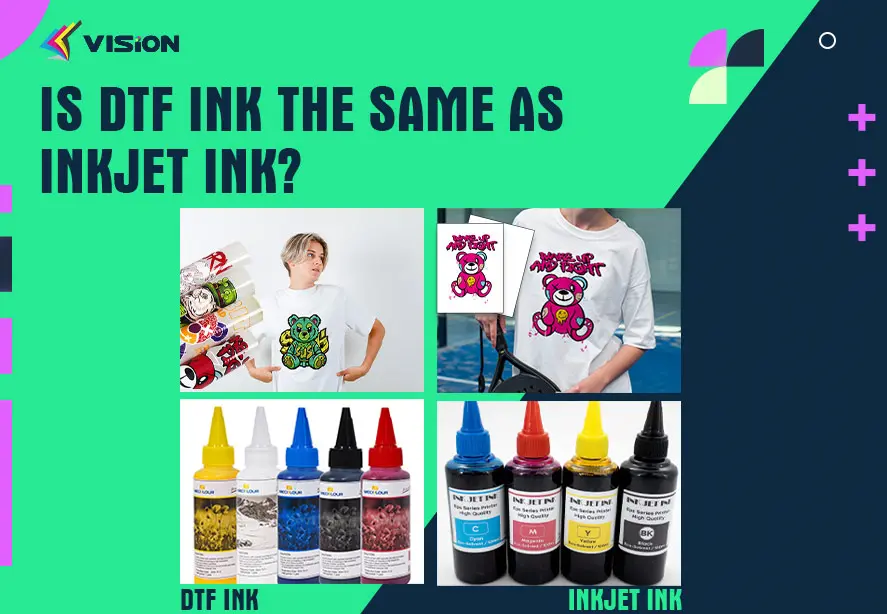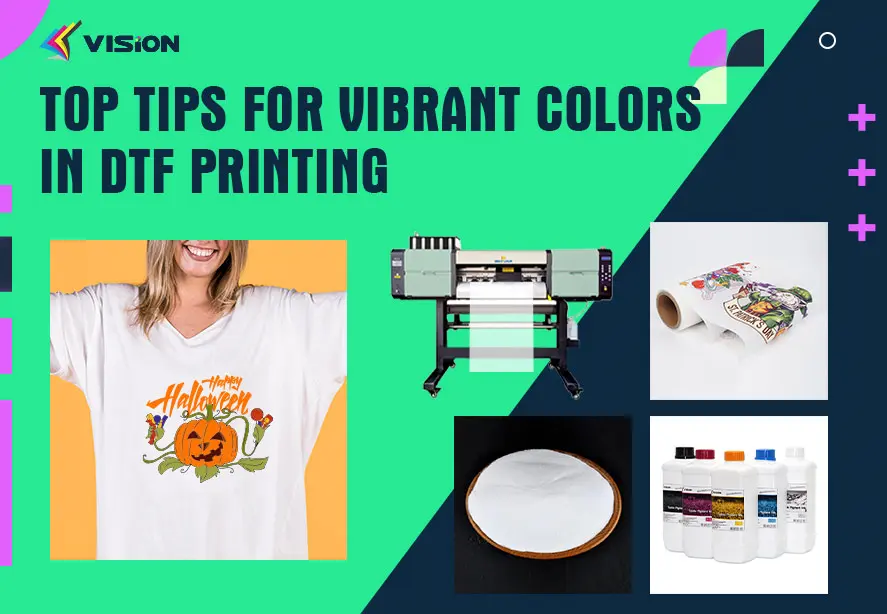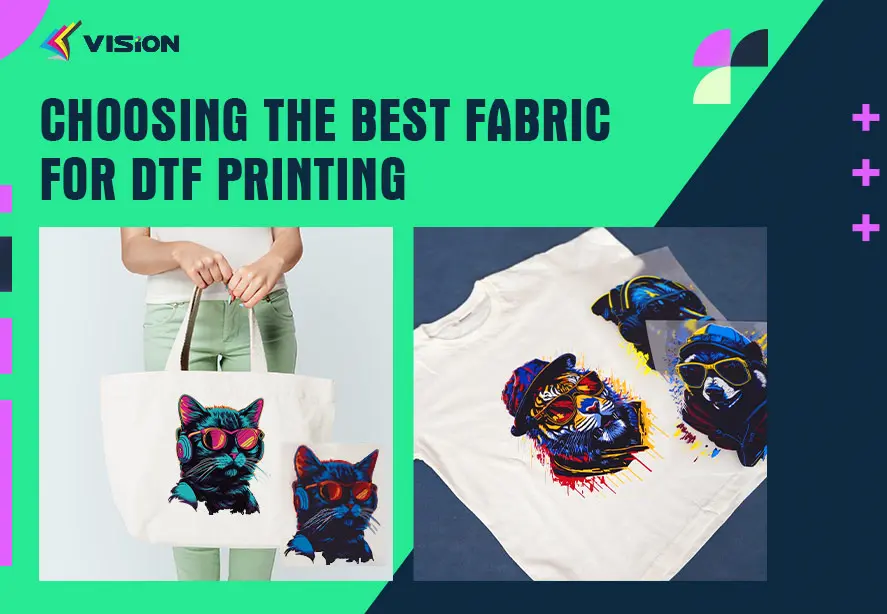Is PET film printing better than DTG for T-shirts?

When it comes to printing T-shirts, both PET film printing (also known as DTF or Direct to Film printing) and DTG (Direct to Garment) have their advantages and are suited for different needs. To determine which is better for your project, let’s dive into the pros and cons of each method.
Pros and cons of PET film printing and DTG printing for T-shirts
1. Print Quality and Detail
PET Film (DTF): DTF printing delivers vibrant colors and sharp details, particularly on darker fabrics. It allows for excellent color gradients and complex designs. Since you print onto a film and then transfer the design, it can achieve great accuracy and detail.
DTG (Direct to Garment): DTG also offers high-quality prints, especially for designs with intricate details or multiple colors. However, it works best on light-colored fabrics. On dark fabrics, a white underbase must be printed first, which can sometimes affect the final print’s brightness and texture.
2. Durability
PET Film (DTF): DTF prints are highly durable. The transfer process results in a strong bond between the design and the fabric, so the prints are less likely to fade, crack, or peel after washing. DTF prints are known to handle repeated washing cycles well.
DTG (Direct to Garment): DTG prints, when done with high-quality ink and curing methods, can also be durable. However, DTG prints are generally more susceptible to fading over time, especially after multiple washes.
3. Fabric Compatibility
PET Film (DTF): One of the biggest advantages of DTF printing is its versatility. It works on a wide range of fabrics, including cotton, polyester, blends, and even some synthetic materials. This makes DTF a great choice if you’re printing on different types of fabrics.
DTG (Direct to Garment): DTG works best on 100% cotton or cotton-heavy blends. While it can print on other materials, the quality and durability tend to drop when printing on fabrics like polyester or synthetic blends.

dtf
4. Feel and Texture
PET Film (DTF): DTF prints tend to feel a bit more textured than DTG prints because of the film transfer process. The feel of the print can be slightly raised on the fabric, especially with thicker designs, but overall, it’s not overly heavy or uncomfortable.
DTG (Direct to Garment): DTG prints are softer to the touch because the ink is absorbed directly into the fabric. This creates a “no feel” print, making DTG ideal for designs where a soft and natural feel is important.
5. Cost-Effectiveness
PET Film (DTF): DTF printing can be more cost-effective, especially for small orders. You don’t need pre-treatment for the fabric, and you can print in bulk or on demand. DTF is also less wasteful since you print directly onto the film and apply it to the fabric, reducing ink waste.
DTG (Direct to Garment): DTG printing can become expensive for small batches due to the cost of ink, maintenance of the printer, and the pre-treatment required for dark fabrics. However, for one-off or custom prints, DTG can still be a viable option.
6. Setup and Speed
PET Film (DTF): DTF is generally faster when printing multiple shirts because you can print multiple designs onto the PET film at once and apply them to garments in batches. There’s also no need for fabric pre-treatment, which speeds up the process.
DTG (Direct to Garment): DTG printing is more time-consuming, particularly when printing on dark fabrics because of the pre-treatment and white ink layers required. For small runs or single designs, DTG might take longer per shirt than DTF.
7. Design Versatility
PET Film (DTF): DTF offers flexibility when it comes to design placement. Since the design is printed on a film, you can cut it and place it anywhere on the T-shirt, making it easier to work with non-traditional placements.
DTG (Direct to Garment): DTG prints directly onto the fabric, which limits design placement options. DTG is best suited for printing in the standard front or back areas of a T-shirt.

dtg
Key Considerations for Choosing PET Film Printing vs. DTG
Choose PET Film (DTF) If:
You need vibrant and durable prints for dark fabrics.
You’re working with a variety of fabrics (cotton, polyester, blends).
You want to print on difficult or non-traditional fabric types.
You’re looking for a cost-effective method for small to medium batches.
Choose DTG If:
You want a soft, “no-feel” print, especially on light fabrics.
Your designs require fine detail on 100% cotton fabrics.
You’re producing custom, one-off prints or short runs.
Both PET film (DTF) and DTG have their strengths, but for T-shirts, it really depends on what you’re looking for. If you’re after durability, versatility with fabric types, and vibrant prints on dark fabrics, DTF might be the better choice. On the other hand, if you’re focused on softness and high-quality prints on light cotton fabrics, DTG is a solid option.
In general, DTF is growing in popularity due to its flexibility and cost-effectiveness, especially for small businesses and custom orders, making it a strong contender against DTG for T-shirt printing!


